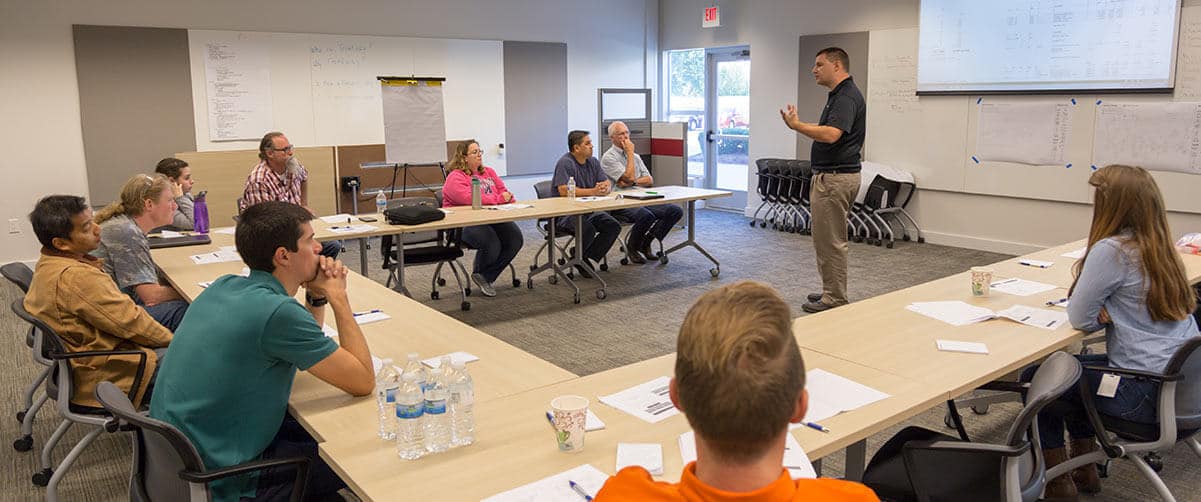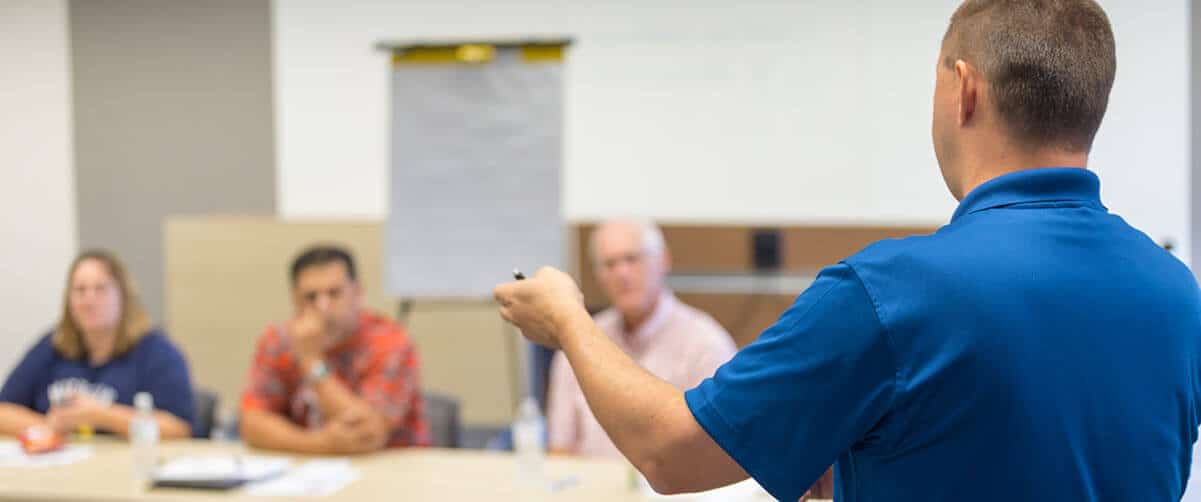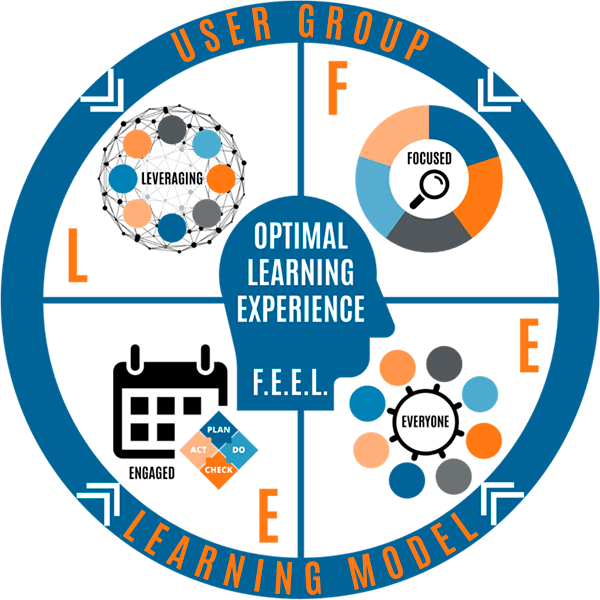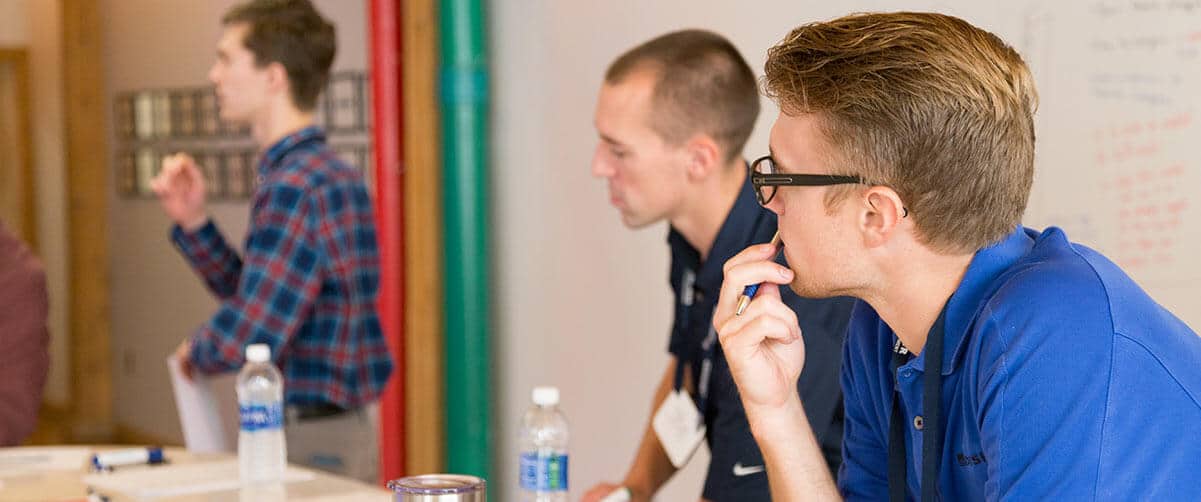
That Works Well & FEELs Good
I remember the first time I realized my passion for facilitating. Let me set the scene… I was a Manufacturing Engineering student at Kettering University. It was 10:00 pm. The windows were glossy black reflecting the cream-cinder-block walls of the empty class room. A ghosting of chalk was still on the blackboards from a previous lecture. The room smelled like academic buildings always did— musty with a hint of cleaning chemicals from the bathrooms down the hall.
It was finals time again which included copious late-night trips to the 7-Eleven and intense cramming sessions. We often used notes from previous-final takers thanks to fraternity and sorority members. I was a sophomore, and I typically studied on my own. I was taking Physics 2: Electromagnetism, and I finally felt like I figured out how to study. Studying in high school was easy but college was not, especially at Kettering.
For the first time, I felt confident in my understanding of the material. But I had friends who did not. They had the usual stream of excuses: no time for homework, no time to meet with the prof to ask questions after class, the professor was hard to understand, etc. Regardless of how they got into their current predicament, they needed help learning and fast. To my surprise, a couple of them asked me to lead a cramming session since I was apparently “good at this stuff”. I thought about it and decided to call a meeting a few days before the final.
Nine classmates showed up that night. I asked what they wanted to review. In an almost unison chorus they replied, “EVERYTHING!” We spent three hours reviewing problems from sample exams. I stood in the front of the room and started drawing graphs and formulas. I explained the key processes used to answer these problems. Others started to provide input when they had an insight or I made a mistake. They began to engage more by drawing and presenting. Each person in the room had knowledge to contribute and our time together provided a great opportunity to share it. We began to grow in our knowledge collectively, and we decided to hold a session every evening until the exam.
As an engineer at DISHER today, I facilitate training with other companies quite often. I look back at these college study sessions as my first experience with a User-Group Learning Model. My model has evolved along the way with meaningful learning occuring. If you are a leader or facilitator of User Groups— there are ways to optimize the learning potential of the group. I define an effective User-Group Learning Model with the acronym FEEL.
THE F.E.E.L. USER-GROUP LEARNING MODEL
FOCUSED – a large-scope topic broken into smaller learning elements
EVERYONE is welcome – a group of diversely-skilled and experienced people
ENGAGED in a facilitated rhythm of learning
LEVERAGING personal-experience sharing
FOCUSED.
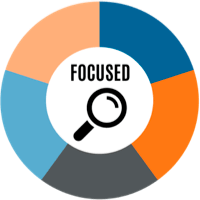
EVERYONE.
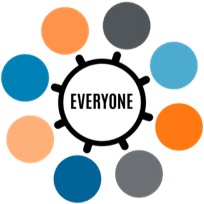
ENGAGED.
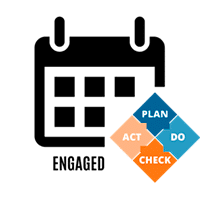
LEVERAGING.
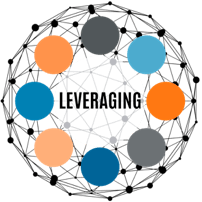
This User Group Learning Model FEELS good to me because it works! Consider applying it within your company wherever possible. DISHER partners with a variety of organizations to facilitate User Groups all the time. DISHER and The Right Place / MMTC facilitate Supervisor Leadership User Groups (SLUG). The focus is on building leadership skills with front-line leaders in manufacturing. DISHER and the Human Resource User Groups join up to facilitate learning on how to build HR processes and best practices in talent attraction and talent branding.
If joining an external User Group is not a good fit for you or your company, practice internal training with this User Group Learning Model. You will be surprised how effective it is to bring team members from different departments, plants, and regions together to optimize learning. If you need help getting started, feel free to reach out to DISHER. Together, we can develop a better way to learn and Make a Positive Difference.
Oh, and by the way, we aced the exam!
Written By: Shawn O’Farrell | Team Lead – Manufacturing Tech Services
Shawn has a BS in Manufacturing Systems Engineering from Kettering University. He enjoys coaching hands-on Continuous Improvement/Lean activities. He has a background in machine automation (robotics, CNC, sensors, pneumatics, PLC programming (AB, Omron), Vision Systems, HMI screen programming, PLC to Network Database Integration), micro-electronics integration and mechatronics, computer programming, and has a strong drive to always learning new things. Outside of work, he enjoys spending time with his two adorable little girls and his wonderful wife.
Written By:

Shawn O'Farrell
Automation Subject Matter Expert
DISHER Newsletter
Sign up to receive articles and insights, delivered monthly.
Schedule a no-committment project call
Reach out to discuss your project to find out if DISHER could be a good fit for you.

